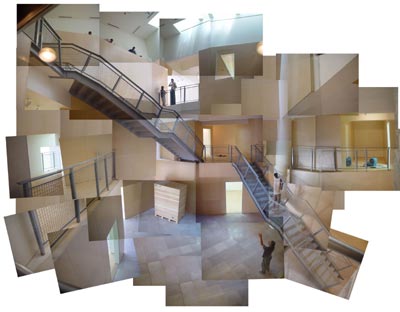|
|
Based in Tel Aviv and London, Eyal Weizman
is a graduate of the London Architectural
Association. He has worked with various projects
at the Zvi Hecker agency in Berlin, before
setting his own office in 2000 with Rafi Segal.
Among projects realized, is the Ashdod Art
Museum (open in June 2003, with Manuel Herz),
a stage set for the Kameri/Itim theatre company,
and short-listing among the finalists for the
design of the Tel Aviv Art Museum. In tandem,
Eyal Weizman has taught architecture at
the Bartlett School of Architecture in London,
at the University of Applied Arts in Vienna,
and at the Haifa Technion; he also participated
in the 2002 and 2003 Venice Biennale. In 2002,
as co-author of the Land Grab report on human
rights, he conducted a research and mapping
programme with the Israeli organization
B’tselem in regard to the violation of human
rights by architecture in the occupied territories.
In 2003, although banned by the Israeli
Association of Architects, Eyal Weizman and
Rafi Segal presented the exhibition, with accompanying
catalogue, titled A Civilian Occupation:
The Politics of Israeli Architecture at the
Storefront Gallery for Art and Architecture in
New York, at the Kunst Werke centre in Berlin,
at Witte de With in Rotterdam and in Kunsthall
Malmö in Sweden. Eyal Weizman is the author
of Yellow Rhythms and Random Walk, and is
currently developing his thesis The Politics of
Verticality/Architecture and Occupation in the
West Bank and Gaza in the form of a publication
and a documentary film. |
